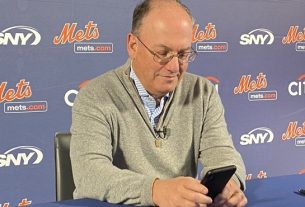Israeli Scientists Developed Digital Aromas For The First Time
Weizmann Institute of Science researchers reveals the mystery of
fragrances in a new study on the sense of smell

Scientists at the Israeli Weizmann Institute of Science have developed digital aromas. They can even predict what the odor of each molecular compound will be.
These findings are a significant step towards realizing the vision of the Vice President of the Israeli National Academy of Sciences, Prof. David Harel to add a floral or sea aroma to photos from recent vacations, a computerized ability to interpret scents similar to our sense of smell can revolutionize a range of areas from environmental monitoring to the biomedical and food industries.
The key to success in this difficult challenge lay throughout Alexander Graham Bell, the inventor of the telephone, which asked high school graduates in 1914 If “they can measure the degree of difference between one scent and another and say if a particular scent is twice as strong as another scent.” That is, instead of describing and measuring the scents themselves, the researchers turned to calculate the relationship between scents as perceived by our sense of smell.
“The challenge of plotting smells in an organized and logical manner was first proposed by Alexander Graham Bell,” says Prof. Noam Sobel of the Institute’s Neurobiology Department. Bell threw down the gauntlet: “We have very many different kinds of smells, all the way from the odor of violets and roses up to asafoetida. But until you can measure their likenesses and differences you can have no science of odor.” This challenge had remained unresolved until now.
In the study published today in the scientific journal Nature the Israeli scientists reveal the mystery of the fragrances and make it possible to predict what the odor will be, rich and complex as it may be, based on its molecular structure.

In the nose, there are millions of olfactory receptors, divided into hundreds of subtypes, each of which is shaped to recognize certain molecular properties. As a result, our brain is able to absorb millions of odors made up of many odor molecules that are combined together in different intensities and doses. In a new study from Prof. Noam Sobel’s lab from the Department of Neurobiology, led by research student Aharon Rabia and Dr. Kobi Snitz, the researchers discovered how to balance the scent.
With the help of French perfume pharmacist Christophe Laudmiel, who has created perfumes for international brands such as Clinique, Tommy Hilfiger and Ralph Lauren as well as fragrances for Procter & Gamble fabric softeners, the researchers created 14 fragrance blends each composed of about 10 molecular components. Then, in a series of experiments, the researchers presented 200 volunteers with pairs of these mixtures and asked them to rate how similar the odors in each pair were.
These experiments yielded a database in which thousands of ratings of the degree of similarity between odor mixtures, as perceived by the experimenters. The researchers used this data to calibrate a multi-dimensional odor map they had previously created based on physical and chemical properties. In the calibrated map they created, each odorant is represented by a vector that combines 21 indices (from polarity to molecular weight) with the angular distance between each two vectors reflecting the degree of perceptual similarity between them – the greater the distance, the more different the odors.
To test the perceptual odor map, the researchers relied on data collected in a large-scale study in Prof. Leslie Washall’s lab at the Rockefeller Institute in New York that examined the ability of experimenters to distinguish between odors. The researchers from Prof. Sobel’s laboratory found that the odor map accurately predicts the results obtained in the study: the smaller the angular distance between the odors, the more difficult it was for the experimenters to distinguish between them – and vice versa. Encouraged by the fact that the model accurately predicted findings collected by others, the team proceeded to the next step: to put the model to the test themselves.
To do this, the researchers prepared more than 100 fragrance mixtures and invited new experimenters to smell them. The model proved itself in an extraordinary way: in fact, the results were similar to the results obtained in experiments testing a sensory perception known as being based on well-defined parameters – color vision. This was particularly surprising given that each person has a unique composition of subtype receptor subtypes, with variability of up to about 30% between people.
Using this method, researchers can now not only predict what the scent of each scent compound will be, but also design scents: for example, they can take a perfume that contains a known group of ingredients, and create a new perfume without any of the ingredients in the original perfume, but with the exact same scent. In color vision, compositions that produce the same color are called “color tamers”; In the present study, the researchers actually created “odor tamers.”
“In our world there are many different types of scents – from the smell of violets and roses to aseptida (an Indian spice that is a substitute for garlic and onion). But as long as we can not measure the similarity and difference between different scents, we do not and can not have scent science,” Bell said in his speech. The famous, and Prof. Sobel replies to him: “The distance between roses and violets is 0.202 radians, while the distance between violets and aspidida – 0.5 radians. The distance between roses and aspidida is even greater – 0.565 radians. Very much the science of smell. “
Read more about: smell, Weizmann Institute of Science



